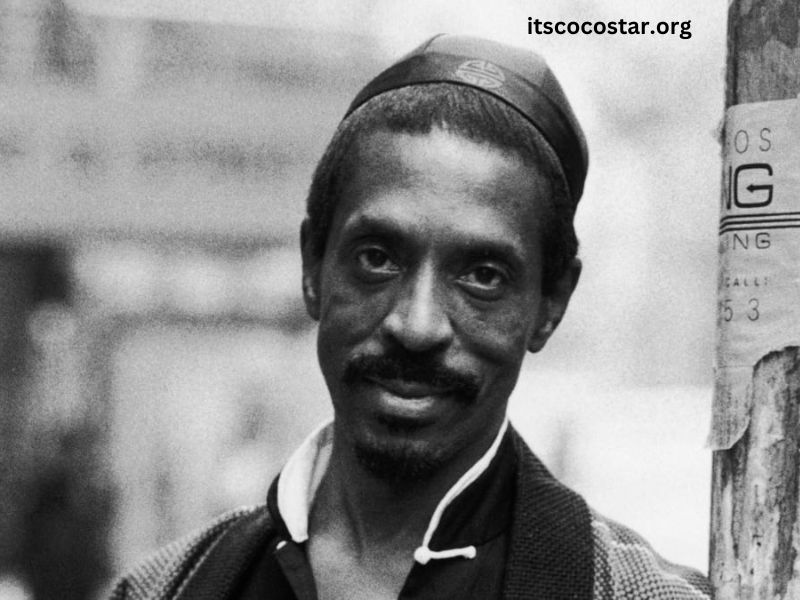Tina Turner, born Anna Mae Bullock, is an icon in the music industry. Her powerful voice, electrifying stage presence, and resilience in the face of personal adversity have inspired generations. However, her journey to stardom was not without significant challenges, many of which were intertwined with her tumultuous relationship with Ike Turner. One of the most haunting aspects of their relationship was the physical abuse Tina endured, an ordeal that was symbolically referenced in the phrase “Ike Give You Black Eye.”
The Early Years: Tina and Ike’s Rise to Fame
Tina Turner’s career began in the late 1950s when she met Ike Turner, a musician and bandleader who was already well-known in the R&B circuit. Ike was a pioneer of early rock and roll, and his band, the Kings of Rhythm, was a popular act in the clubs of St. Louis. When Anna Mae Bullock joined Ike’s band, she quickly became the star attraction. Her dynamic voice and raw energy on stage were unlike anything Ike had ever seen, and he quickly recognized her potential.
Ike gave Anna Mae the stage name “Tina Turner” and the two began performing together as the Ike & Tina Turner Revue. Their act was a massive success, blending rock, soul, and rhythm and blues in a way that captivated audiences. Hits like “A Fool in Love,” “River Deep – Mountain High,” and “Proud Mary” solidified their place in music history. However, behind the scenes, their personal relationship was far from harmonious.
The Dark Side of Fame: Ike Turner’s Abuse
As Tina’s star continued to rise, the relationship between Ike and Tina Turner became increasingly toxic. Ike was not only controlling but also physically abusive. Tina later revealed in interviews and her autobiography, “I, Tina,” that Ike’s abuse began early in their relationship and escalated as their fame grew. He was possessive and demanded total control over Tina’s career and personal life. The physical violence became a regular occurrence, and Tina often found herself trapped in a cycle of fear and intimidation.
The phrase “Ike Give You Black Eye” became a symbol of the abuse Tina suffered. It wasn’t just about the physical harm but also the emotional and psychological toll that Ike’s behavior had on her. Tina was often forced to cover up the bruises and injuries with makeup before going on stage. She lived in constant fear, knowing that any slight provocation could lead to another violent episode.
The Impact of Abuse on Tina Turner’s Career
Despite the abuse, Tina continued to perform with Ike, and their act remained popular throughout the 1960s and early 1970s. However, the toll of living with an abuser was evident in Tina’s demeanor and performances. While she continued to deliver electrifying shows, those close to her noticed the strain that Ike’s behavior was placing on her.
Tina’s music during this period often reflected her pain and struggles. Songs like “Nutbush City Limits,” which she wrote about her hometown, contained underlying themes of resilience and defiance. However, the true extent of her suffering was not widely known until years later when Tina finally found the courage to speak out.
Breaking Free: Tina Turner’s Escape and Rebirth
In 1976, after enduring years of abuse, Tina Turner made the brave decision to leave Ike. The breaking point came after a particularly brutal beating in Dallas, Texas, where Tina finally decided that she could no longer live under Ike’s control. With just 36 cents and a Mobil gas card in her pocket, Tina fled their hotel and sought refuge with friends.
Leaving Ike was not just about escaping the physical abuse; it was also about reclaiming her identity and her life. The decision to leave marked the beginning of a long and difficult journey for Tina. She was financially destitute, having left behind everything she had worked for. But she was determined to rebuild her life and career on her own terms.
The divorce from Ike was finalized in 1978, with Tina agreeing to take on the debt from canceled tour dates and unpaid taxes. In return, she retained the rights to her stage name, “Tina Turner,” which Ike had originally created for her. This name would become synonymous with strength, resilience, and empowerment in the years to come.
The Road to Recovery and Solo Success
After leaving Ike, Tina Turner faced significant challenges. The music industry was skeptical about her ability to succeed as a solo artist without Ike, and she struggled to secure a record deal. However, Tina’s determination and talent eventually paid off. In 1984, she released her album “Private Dancer,” which became a massive success. The album included hits like “What’s Love Got to Do with It,” “Better Be Good to Me,” and “Private Dancer,” and it won multiple Grammy Awards.
“Private Dancer” marked a turning point in Tina’s career, transforming her from a former R&B star into a global pop icon. She went on to achieve even greater success in the years that followed, with sold-out tours, more hit albums, and a reputation as one of the greatest live performers in music history.
Speaking Out: Tina Turner’s Legacy and Impact
In the years following her escape from Ike, Tina Turner became an advocate for survivors of domestic abuse. Her story resonated with millions of people around the world, and she used her platform to raise awareness about the issue. Tina’s autobiography, “I, Tina,” published in 1986, was a candid and harrowing account of her life with Ike. The book was later adapted into the 1993 film “What’s Love Got to Do with It,” starring Angela Bassett as Tina Turner and Laurence Fishburne as Ike Turner. The film brought Tina’s story to a wider audience and highlighted the devastating impact of domestic violence.
Tina Turner’s willingness to speak out about the abuse she endured was groundbreaking at the time. In the 1980s and 1990s, domestic violence was still a largely taboo subject, and many victims were reluctant to come forward. Tina’s bravery in sharing her story helped to break down these barriers and encouraged other survivors to seek help and tell their own stories.
The Complex Legacy of Ike Turner
While Ike Turner’s legacy is undeniably tarnished by his abusive behavior, it is important to recognize that he was also a significant figure in the history of rock and roll. As a musician, Ike was a pioneer, and his contributions to the genre cannot be overlooked. However, his personal demons, particularly his abusive relationship with Tina, have overshadowed his musical achievements.
Ike Turner struggled with drug addiction and legal problems in the years after his separation from Tina. He attempted to revive his career but never achieved the same level of success. Ike passed away in 2007, and while he left behind a complicated legacy, his role in shaping the sound of early rock and roll remains an important part of music history.
Tina Turner’s Enduring Strength and Influence
Tina Turner’s story is one of triumph over adversity. Despite the hardships she faced, she emerged as one of the most successful and influential artists of all time. Her music, her performances, and her personal journey have inspired countless people around the world. Tina’s ability to rise above her circumstances and achieve greatness is a testament to her strength and resilience.
Tina Turner’s influence extends beyond music. She is a symbol of empowerment for women, particularly survivors of domestic abuse. Her story has encouraged many to find the courage to leave abusive relationships and to rebuild their lives. Tina’s legacy is one of hope, strength, and the unwavering belief that it is possible to overcome even the most difficult challenges.
Conclusion
The phrase “Ike Give You Black Eye” is a stark reminder of the physical and emotional abuse Tina Turner endured during her time with Ike Turner. However, it also serves as a powerful symbol of Tina’s strength and resilience. Despite the violence and control she experienced, Tina was able to break free and build a life and career on her own terms.
Today, Tina Turner is celebrated not only for her incredible contributions to music but also for her courage in sharing her story and helping others. Her journey from abuse to empowerment continues to inspire people around the world, making her one of the most iconic and beloved figures in music history.







